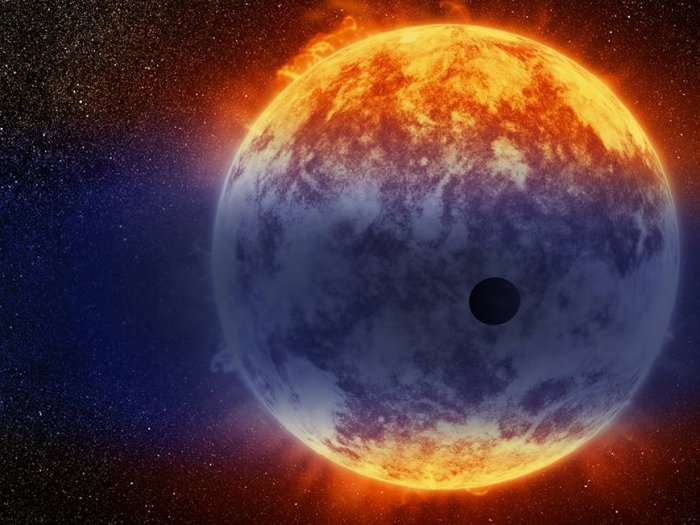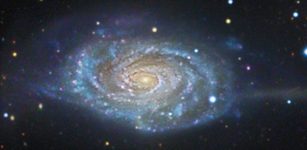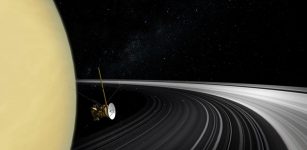Rare Neptune-Sized Exoplanet 96 Light-Years Away
MessageToEagle.com – Astronomers discovered that a medium-sized planet roughly the size of Neptune, GJ 3470b – 96 light-years away – is evaporating at a rate 100 times faster than a previously discovered planet of similar size, GJ 436b.
“This is the smoking gun that planets can lose a significant fraction of their entire mass. GJ 3470b is losing more of its mass than any other planet we seen so far; in only a few billion years from now, half of the planet may be gone,” David Sing, Bloomberg Distinguished Professor at Johns Hopkins and an author on the study, said in a press release.

This artist’s illustration shows a giant cloud of hydrogen streaming off a warm, Neptune-sized planet just 97 light-years from Earth. The exoplanet is tiny compared to its star, a red dwarf named GJ 3470. The star’s intense radiation is heating the hydrogen in the planet’s upper atmosphere to a point where it escapes into space. The alien world is losing hydrogen at a rate 100 times faster than a previously observed warm Neptune whose atmosphere is also evaporating away. Credit: NASA, ESA, and D. Player (STScI
The study is part of the Panchromatic Comparative Exoplanet Treasury (PanCET) program, led by Sing, which aims to measure the atmospheres of 20 exoplanets in ultraviolet, optical and infrared light, as they orbit their stars.
One particular issue of interest to astronomers is how planets lose their mass through evaporation. Planets such as “super” Earths and “hot” Jupiters orbit more closely to their stars and are therefore hotter, causing the outermost layer of their atmospheres to be blown away by evaporation.
While these larger Jupiter-sized and smaller Earth-sized exoplanets are plentiful, medium Neptune-sized exoplanets (roughly four times larger than Earth) are rare and difficult to observe because they can only be studied in UV light, which limits researchers to examining nearby stars no greater than 150 light-years away from earth, not obscured by interstellar material. GJ 3470b circles a red dwarf star in the general direction of the constellation Cancer.
Hubble found that exoplanet GJ 3470b had lost significantly more mass and had a noticeably smaller exosphere than the first Neptune-sized exoplanet studied, GJ 436b, due to its lower density and receipt of a stronger radiation blast from its host star.
GJ 3470b’s lower density makes it unable to gravitationally hang on to the heated atmosphere, and while the star hosting GJ 436b was between 4 billion and 8 billion years old, the star hosting GJ 3470b is only 2 billion years old; a younger star is more active and powerful, and, therefore, has more radiation to heat the planet’s atmosphere.
Sing’s team estimates that GJ 3470b may have already lost up to 35 percent of its total mass and, in a few billion years, all of its gas may be stripped off, leaving behind only a rocky core.
“We’re starting to better understand how planets are shaped and what properties influence their overall makeup,” Sing said. “Our goal with this study and the overarching PanCET program is to take a broad look at these planets’ atmospheres to determine how each planet is affected by its own environment. By comparing different planets, we can start piecing together the larger picture in how they evolve.”
MessageToEagle.com










